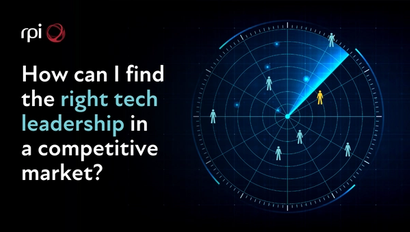What’s the not-so-secret ingredient that’s missing from your data strategy?
People.
They are always going to be part of the process, of course: creating, editing, viewing and using data. But how much have you factored people into your data strategy, outside of the data professionals that are facilitating the project? Every single person in your business has a crucial role to play in the data lifecycle and will have a significant influence on any data project’s success.
A disconnect between data and people will always spell bad news for an organisation’s digital transformation, whether it’s at C-suite level or amongst junior employees. It’s bad for data quality. It inhibits real digital change. It creates siloes. It disrupts information flows. It erodes customer confidence. It leads to bad decision making, ineffective automations, and poor performance.
People have the power to destroy digital change through poor data handling – but they are also key to any data-driven transformation’s success. So, what’s the answer? How can businesses bring the two together to make sure that every data-driven project or action is a success?
Data and people don’t mix. But they need to.
The way people process information, store it and use it is coloured by emotions and often, subconsciously, guided by our own agenda. One of the biggest risks to a business’ data strategy is that mix of emotions and objectives at play, with people unwittingly steering away from the enterprises ‘data vision’ in favour of their own priorities.
For instance, what one department deems ‘critical information’ can be very different to another’s – think marketing vs logistics, for instance. Each department can find themselves selecting and de-prioritising data that is unimportant to them, not realising that, elsewhere, that data is essential to an automation function, or digital initiative. As a result, valuable data can end up missing, inaccurate or siphoned off into a silo that the rest of the business can’t access.
Yet data needs people to drive business change. It needs individuals in every part of the business to understand its importance, to use it correctly and to extract value from it – whether that’s taking action on an emerging data trend, or processing data to automate certain tasks.
People aren’t just important to data strategy for technical reasons. They’re also essential from a commercial and ethical standpoint. It’s people, not processes, that are able to identify and drive commercial opportunities with data – as well as addressing the ethical considerations of those ideas and opportunities. Just because you can with data doesn’t always mean you should – whether that’s because it deviates from commercial objectives, is unlikely to deliver the return it should, or it poses a moral issue, like intrusion or data security risks.
Defining the right data leadership
A strong data strategy needs strong leadership: someone with the skills and experience to give data projects purpose, direction and achieve commercial results. In today’s rapidly evolving digital society, data leaders need to be more than a facilitator: they need to become educators, able to communicate the importance of data to the business and the possibilities, from ground level to the CEO. A good data lead recognises the role of data in every business function and can share that vision across the board – most importantly, with the organisation’s most senior team members.
Here we hit another people/data problem: the toothless Chief Data Officer (CDO). All too often, CDOs are brought in to transform a business’ relationship with data, only to find themselves powerless to implement change, lacking experience in a senior role, and fighting against legacy attitudes and technology. No wonder, then, that the CDO role so frequently suffers from short tenures and high turnover. Data leads can only be successful – and instigate real data transformation – if they have the right voice and the tools to do so.
A data strategy without a strong, able data lead will be rudderless – which always leads to a wreck.
Enabling data literacy
Data literacy is a fundamental understanding of what data is and how it works, and according to Gartner, it’s the second-biggest roadblock to CDO success.
Despite so much of the world’s workforce interacting with data day-in, day-out, many are missing the basic understanding they need to truly appreciate data and utilise it correctly. Often, people’s understanding of data is based on projects they have been involved with, or tasks they’ve been assigned, which gives them a fragmented idea of data as opposed to the ‘full picture’.
A Data Literacy Index study found that 76% of key business decision makers aren’t confident in their data literacy skills, while just 21% of the global workforce feel fully able to read, understand, question and work with data. Organisations can’t assume that employees have the basic data understanding and abilities they need to make data projects a success: they need to prioritise data literacy through education, information and leadership.
Implementing Data Governance
The best way to rally your people together under the same data banner is data governance. Data governance provides a clear guide for your organisation’s data quality and data practices. From what ‘good data’ should look like, to where it should be stored, and how it should be used, data governance writes the rulebook on data, and makes sure that everyone is following. A successful data governance process goes beyond just writing the rules and forcing people to follow them: it creates a culture that respects data and recognises the value it can bring to every employee.
People and data may not always mix, but it is possible to get them working together to drive commercial growth for your business. With the right leadership, a focus on data literacy and a clearly communicated data governance framework, you can connect people and data to drive your digital transformation. If you need to find the right data leaders for your business, contact Hugh Williams on LinkedIn or via email at hw@rpint.com.



